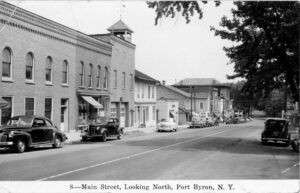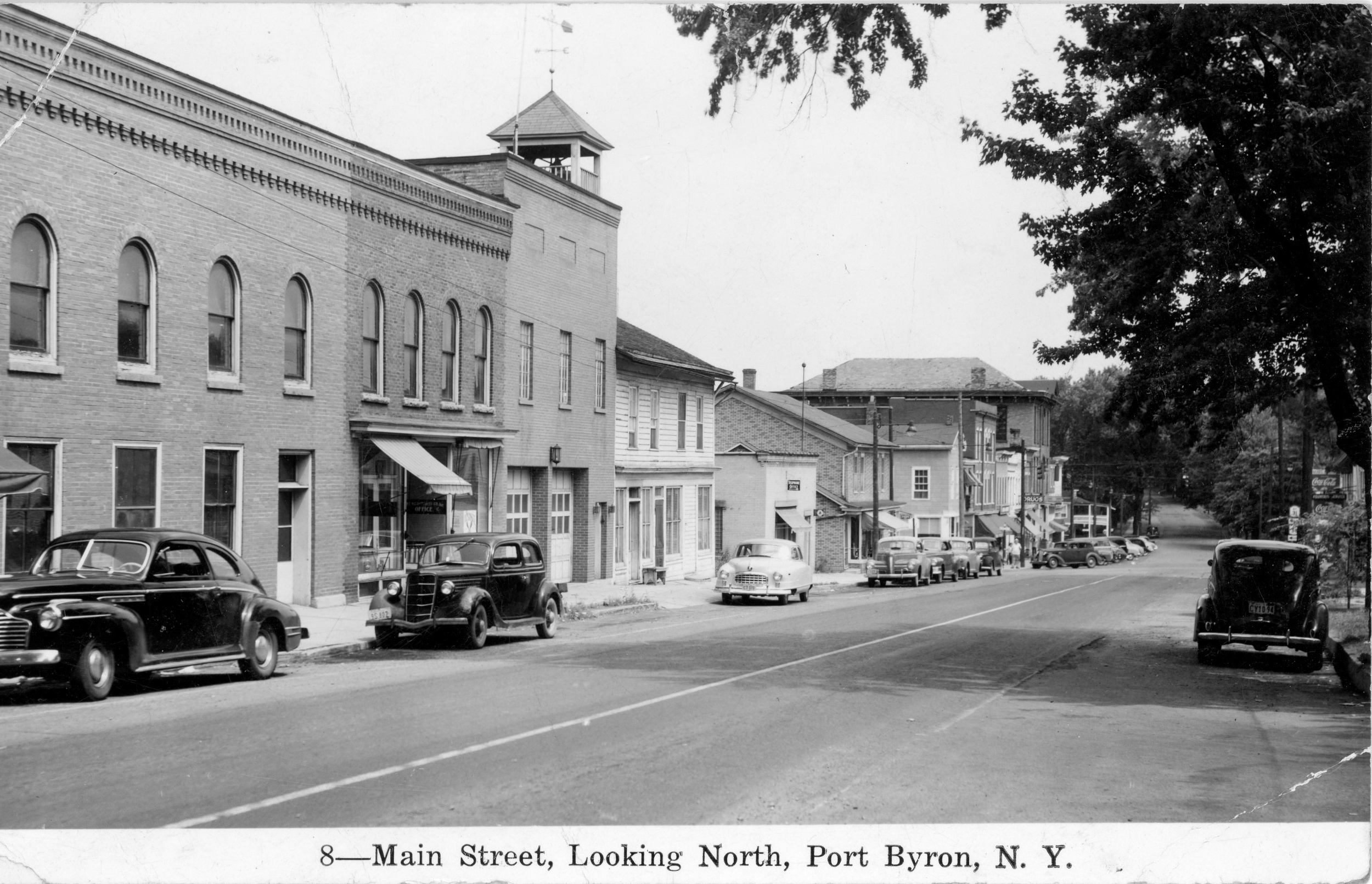With the opening of Vault House Wine and Liquor in the old bank building, I thought it was a good time to take a look at the history of liquor stores and their owners, and hopefully to stir a few memories for some. But before we go there, lets take a look at the history of liquor sales in the town.
Prior to the adoption of the 18th Amendment, which made the sale of liquor illegal in 1920, the battle over the sale of booze was at the town level. At the end of the 1800s and into the early 1900s, the voters were asked every two years to vote on four questions under the liquor tax law. They were: 1) Can liquor be sold in a bar or tavern?, 2) Can liquor be sold in a store?, 3) Can liquor be sold in a pharmacy, or be prescribed by a doctor?, 4) Can liquor be sold in a hotel? The voters could vote yes, no or a mix, and often it was decided that sales in the local saloon was to be banned, but in the hotels, with their traveling guests, it would be okay to sell booze and give a hand to local commerce. Of course, if you have ever taken a tour through the Erie House, you might have been told that although it was a “hotel,” it never really had a paying overnight guest. The Erie House was what was called a “Raines Hotel,” meaning that the rooms upstairs were only there to satisfy the regulations that differentiated a saloon from a hotel.
If you were for liquor, you were called a Wet. Those opposed were the Drys. I am not certain if the owner of the Chronicle was a Dry or a Wet, but he ran a Temperance Column put out by the Woman’s Christian Temperance Union (W.C.T.U.) where the dangers of drink were outlined each week. The town went partly dry in 1907, and was completely dry in 1909. If you wished to find a drink, your options were found at a tavern or store in Montezuma, Conquest, Aurelius or Owasco, and Auburn. The rest of Cayuga County had gone dry. The passage of the 18th Amendment simply extended the prohibition of liquor sales through the 1920s and into the ‘30s.
However, even though the Town was dry in 1909, it never hurt for those who sold liquor to advertise and it is no surprise that Anderson Brothers Wine and Liquor of Auburn was a frequent advertiser in the Chronicle. (Be he a Wet or Dry, the owner of the paper wasn’t going to turn away advertising.)
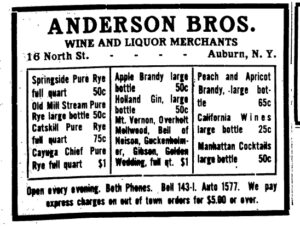
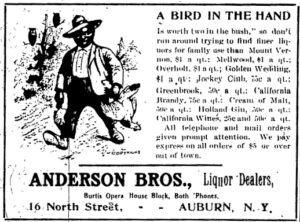
In early 1933, President Roosevelt signed the Volstead Act which allowed the sale of low alcohol beers and wines. Then with the passage of the 21st Amendment in November 1933, which repealed the 18th Amendment, the county was once again wet. However the fight was not over. If the “drys” in a town could muster enough signatures on a petition, the question of liquor sales would be once again put to the voters, regardless of the 21st Amendment. So in 1935, the voters of Sterling and Mentz were on the vanguard of the new movement to reinstate local prohibition. And the question of sales was much like the earlier votes, with options asking if liquor could be sold in bars and taverns, or to be sold in stores, and/or, to be sold by hotel owners only. The Chronicle reported that the town had one of its largest “off-season” votes in history, with over 800 people turning out to let their voice be heard. In the end, the Wets of Mentz carried the day, while Sterling turned dry.
With the sale of liquor legal, the village soon had a liquor store. And it appears over the years that one store was sold and resold. William Sedor appears to have been the first owner. He then sold the store to Margaret Van Buskirk in 1941 as he got ready to enlist in the Army. I don’t know how long she kept the store open as there is an article that says that the store was closed during the war years. After the war, Anthony Catalfano is shown as the owner, and he signed his ads with the note that he was an “ex-serviceman.”
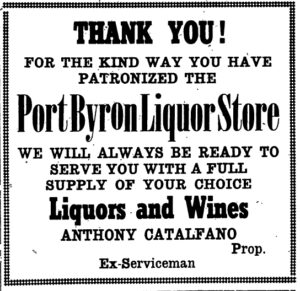
Anthony attempted to sell the store to J.R. Walters, the owner of the IGA market, however the sale was denied as the store’s license was only for a veteran and couldn’t be sold for two years. So Catalfano kept the store for a few more years. Edward and Mary Delaney purchased the store in October 1950 and they began the longest period of ownership. After Edward died in 1965 Mary kept the store going and then sold the business to Winford and Pearl Longyear in 1974. They sold it to Anna Strapach in 1977. Then the paper trail gets a bit hazy. Mark Emerson says that he ran the store from 1985 to 1988, and that he stated he sold it to another couple who ran it for about three years. That may have been the last of the store. So far, the only photo I could find that showed the building is this one. I would love to have a better view.
